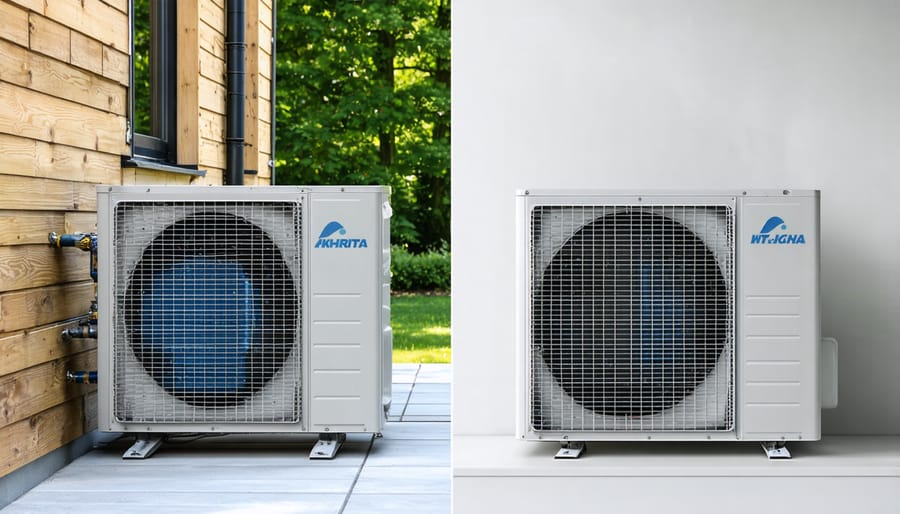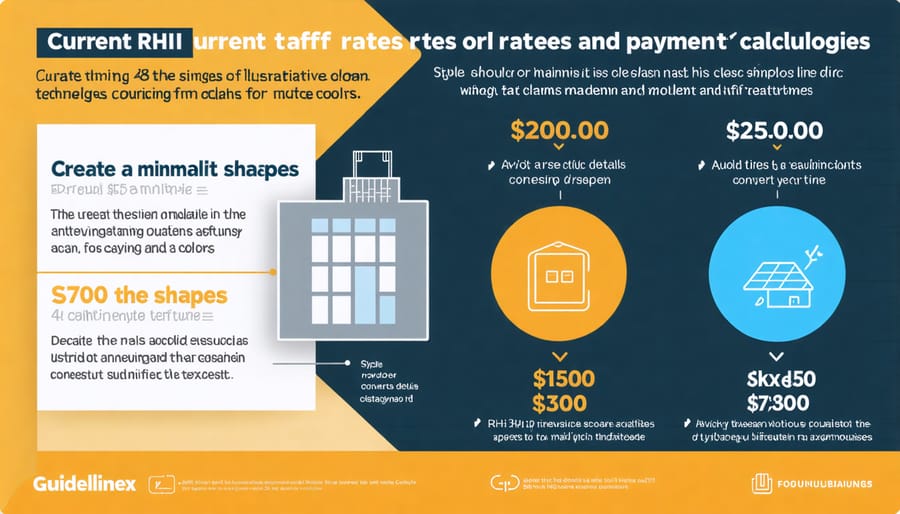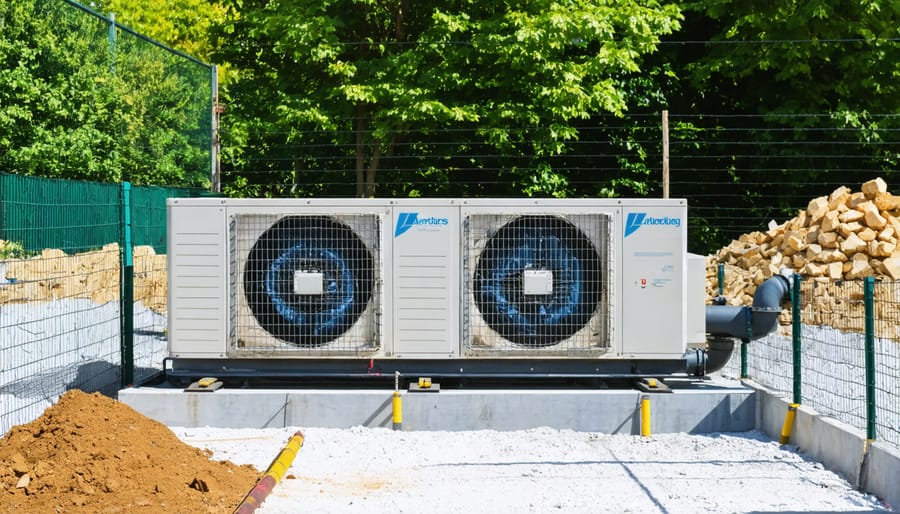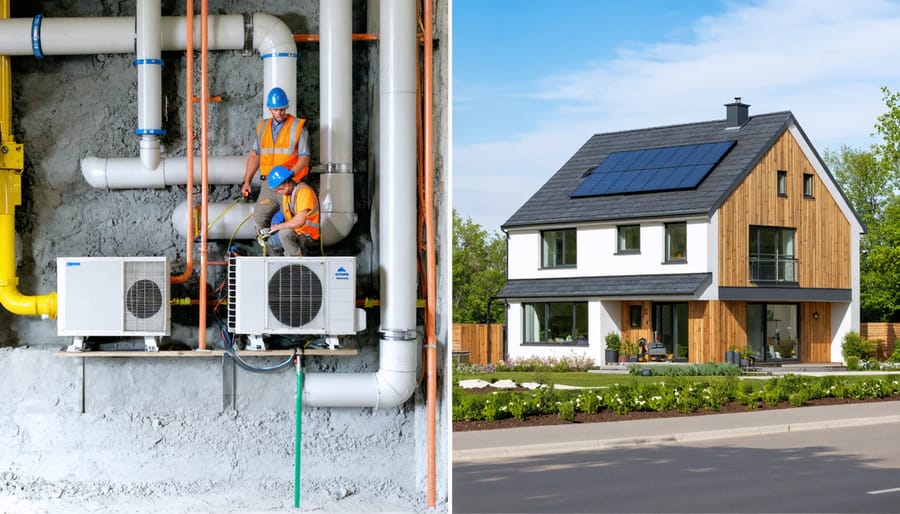Renewable Heat Incentives (RHI) represent a transformative shift in how the construction industry approaches sustainable building design and energy efficiency. As renewable energy policies continue to reshape industry standards, these financial mechanisms offer construction professionals unprecedented opportunities to integrate clean heating technologies while maintaining robust return on investment. For building developers and project managers, RHI programs provide substantial financial support—often covering up to 40% of installation costs—when implementing qualifying renewable heating systems such as biomass boilers, heat pumps, and solar thermal technologies. Beyond immediate cost benefits, these incentives establish a clear pathway for construction firms to meet increasingly stringent environmental regulations while positioning themselves as leaders in sustainable building practices. Understanding and leveraging these incentives has become crucial for industry professionals seeking to deliver future-proof buildings that combine environmental responsibility with economic viability.
Understanding the Renewable Heat Incentive (RHI) Scheme
Domestic vs. Non-Domestic RHI
The Domestic and Non-Domestic Renewable Heat Incentive (RHI) schemes represent two distinct approaches to promoting renewable heating technologies in the UK construction sector. The Domestic RHI targets individual households and small-scale residential developments, offering payments over seven years for eligible renewable heating systems installed in single domestic properties. This scheme particularly benefits residential developers and homeowners installing technologies such as air-source heat pumps, ground-source heat pumps, biomass boilers, and solar thermal systems.
In contrast, the Non-Domestic RHI caters to commercial, industrial, and large-scale residential projects, providing payments over 20 years. This scheme is particularly relevant for construction companies working on commercial buildings, industrial facilities, schools, hospitals, and district heating networks. The Non-Domestic RHI typically supports larger installations and offers different tariff rates based on the technology type and size of the installation.
Key differences between the schemes include eligibility criteria, payment structures, and application processes. The Domestic RHI requires MCS certification for installers and equipment, while the Non-Domestic scheme has more complex metering requirements and often necessitates detailed heat loss calculations. For construction professionals, understanding these distinctions is crucial for project planning and cost estimations.
Recent industry data shows that the Non-Domestic RHI has been particularly successful in driving the adoption of biomass heating in commercial construction projects, while the Domestic RHI has significantly increased heat pump installations in new residential developments. Both schemes have played vital roles in transforming the UK’s approach to sustainable heating in construction, though they require different implementation strategies and technical considerations.

Eligible Technologies and Systems
Several renewable heating technologies qualify for incentive programs, each offering distinct advantages for reducing building emissions and operational costs. Air source heat pumps (ASHPs) represent one of the most widely adopted solutions, capable of extracting heat from outdoor air even in cold conditions. These systems typically achieve coefficients of performance between 3.0 and 4.0, making them particularly efficient for space heating and hot water production.
Ground source heat pumps (GSHPs) offer even higher efficiency levels, though they require suitable land area for installation. Both horizontal and vertical loop systems qualify, provided they meet minimum seasonal performance factor requirements of 2.5 and are installed by certified professionals.
Biomass boilers and stoves that utilize sustainable wood pellets or chips are eligible when they achieve at least 85% efficiency and comply with emissions standards. These systems must include automated fuel feed mechanisms and appropriate thermal storage capabilities.
Solar thermal systems qualify when they’re designed for water heating purposes and feature collectors certified to EN 12975 or EN 12976 standards. Installation must be completed by MCS-certified contractors using approved equipment.
Combined heat and power (CHP) systems running on renewable fuels may also qualify, though specific capacity limits and efficiency thresholds apply. These systems must demonstrate primary energy savings of at least 10% compared to separate heat and power generation.
All eligible technologies must be installed in accordance with relevant building codes and MCS installation standards. Systems require appropriate metering devices to monitor performance and verify compliance with program requirements.
Financial Benefits and ROI Analysis

Payment Rates and Calculations
Current tariff rates for renewable heat technologies vary based on installation size, technology type, and application. For biomass boilers, rates typically range from 6.2p/kWh to 9.4p/kWh, while ground source heat pumps command premium rates between 19.3p/kWh and 21.2p/kWh. Air source heat pumps generally attract rates of 7.3p/kWh to 11.5p/kWh.
Payment calculations follow a standardized formula: Tariff rate (p/kWh) × Heat output (kWh) × Payment period (quarterly). The heat output is measured through approved metering systems, ensuring accurate compensation for actual renewable heat generated. These financial incentives for renewable energy are guaranteed for up to 20 years from the registration date.
For commercial installations, tiered rates may apply based on the system’s capacity and usage patterns. Tier 1 rates cover the initial proportion of heat generation, while Tier 2 rates apply to additional output. This structure encourages optimal system sizing and efficient operation.
Additional factors affecting payment calculations include:
– Seasonal performance factors for heat pumps
– Fuel quality requirements for biomass systems
– Annual heat demand limits
– Metering and monitoring service package requirements
Payments are made quarterly, subject to ongoing compliance with scheme requirements and submission of periodic meter readings through the official portal.

Implementation Strategies for Construction Projects
Compliance and Certification Requirements
To qualify for renewable heat incentives, projects must meet stringent compliance standards and obtain necessary certifications. All installations must be performed by MCS-certified installers using MCS-certified products to ensure quality and reliability. This aligns with broader green building certification requirements and industry standards.
Key certification requirements include:
– Valid Energy Performance Certificate (EPC)
– Metering and monitoring service package installation
– Documentation of system specifications and performance data
– Regular maintenance records and compliance reports
Projects must demonstrate proper sizing of heating systems according to building requirements and maintain minimum energy efficiency standards. Annual compliance checks are mandatory, with system performance data submitted quarterly. Non-compliance can result in payment suspension or scheme disqualification.
All renewable heating technologies must meet specific technical standards for their respective categories, including minimum seasonal performance factors for heat pumps and emissions criteria for biomass systems. Regular system inspections and performance verification are essential for maintaining certification status.
Renewable heat incentives represent a significant opportunity for construction professionals to enhance project sustainability while securing substantial financial benefits. By incorporating renewable heating technologies into building designs, professionals can reduce operational costs, meet regulatory requirements, and contribute to environmental goals. To get started, assess your project’s heating requirements and explore eligible technologies such as heat pumps, biomass boilers, or solar thermal systems. Consult with accredited installers, review current incentive rates, and ensure compliance with scheme requirements. Remember to document everything thoroughly and maintain proper certification. Success in implementing renewable heat solutions requires careful planning, quality installation, and ongoing system maintenance. Take advantage of available resources and expert guidance to maximize the benefits for your construction projects and clients.

